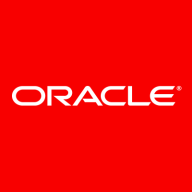


Find out what your peers are saying about Amazon Web Services (AWS), Google, Microsoft and others in Public Cloud Storage Services.
Moving infrequently accessed data to cheaper classes like Glacier is beneficial for long-term storage at a lower cost.
Amazon S3 has a reasonable price as you pay a flat price to use it.
If AWS improves support and cost management, there would be fewer reasons for users to consider other cloud platforms.
As it is Amazon S3 Glacier, it is used only for archival purposes, so it is comparatively okay to use it, and we can save money compared to the standard which is high.
I rate the technical support from Amazon for S3 a ten out of ten.
An engineer is assigned based on the severity of the issue.
The technical support for Amazon S3 is rated ten out of ten.
There is room for improvement in providing more skilled and comprehensive solutions.
They provide documentation and resolve issues.
If it is a business plan, then the support we have is really good.
When issues arise, it takes them at least three to four hours to respond.
I have a premium subscription for Oracle Cloud, which ensures a high level of support.
Oracle is more cost-effective than competitors.
Data placed in an S3 bucket is replicated across availability zones in a region, ensuring scalability and availability.
The level of scalability allows storage to automatically scale on demand, without the need for manual intervention.
Amazon S3's automatic scaling has benefited me, as I don't need to plan storage requirements.
Amazon S3 Glacier auto-scales according to the data.
Amazon S3 Glacier is infinitely scalable, with no issues on our end.
Glacier has excellent scalability, with elasticity and security that meet industry standards.
The scalability of Oracle Cloud Object Storage deserves a perfect ten as it can be scaled easily.
We can adjust the number of CPUs as per our need and reduce the load.
There is zero latency or downtime.
Transitioning between S3 storage classes, like moving data from the standard class to Glacier or Glacier Deep Archive, has been challenging.
Amazon S3 is highly stable.
It is specifically designed for cold storage.
I do not experience any stability issues.
Amazon S3 Glacier is quite stable, nine out of ten.
The system is stable, especially when set up in a single region.
An improvement could be associating the naming with personal accounts, allowing more familiar or desired names without conflicting with global conventions.
The practice of protecting data could be more streamlined or mandatory.
I would like to see an increase in the data upload limit, similar to DynamoDB, where there is no data limit.
I would like to see improvements in the transfer rate as it takes quite a long time to retrieve data from Glacier compared to standard S3 storage.
Support could be more robust, with a focus on providing comprehensive solutions even for novel issues.
Another improvement is making Glacier available in all regions.
The product can be difficult to use compared to how it is marketed.
I would like to know about integration with other Oracle Cloud services and whether it is easy to integrate Oracle Cloud Object Storage with other Oracle Cloud solutions.
The retrievability for Oracle Cloud Object Storage could be made simpler through the implementation of a GUI interface to retrieve data.
I've used the free tier and haven't been charged yet.
S3 offers multiple classes, allowing you to move data to cheaper classes for cost savings.
It is somewhat justified due to the benefits, but there is room for reconsideration.
Compared to competitors like GCP, AWS can work on reducing hidden costs and overall pricing to retain startups and medium-sized businesses.
The storage cost is minimal, which is beneficial for archival purposes.
Amazon S3 Glacier is beneficial due to its lower cost.
The pricing for Oracle Cloud Object Storage deserves a perfect ten as it is very inexpensive.
It is an expensive product.
The pricing for Oracle Cloud is comparable to other cloud providers.
Its stability and scalability are also impressive, as it allows for increased storage space according to demand.
I appreciate its capability to create static websites and integrate with services like CloudFront, EC2, and DynamoDB.
Security measures like encryption, access controls, and the block public access feature are also important.
Glacier greatly helps in managing storage costs by moving historical data to a lower-cost storage option.
The security features include object lock encryption and immutability options, so we can use this for backups.
The most valuable features of Amazon S3 Glacier are its cost-effectiveness for data archiving and its durability.
High availability, a large dataset, and stability are our main criteria for using this solution.
I find manageability, scalability, and security of the product most valuable.
It also provides multi-region support, enhancing data accessibility and safety.
| Product | Market Share (%) |
|---|---|
| Amazon S3 Glacier | 13.8% |
| Amazon S3 | 14.1% |
| Oracle Cloud Object Storage | 3.9% |
| Other | 68.2% |



| Company Size | Count |
|---|---|
| Small Business | 33 |
| Midsize Enterprise | 17 |
| Large Enterprise | 38 |
| Company Size | Count |
|---|---|
| Small Business | 25 |
| Midsize Enterprise | 6 |
| Large Enterprise | 14 |
| Company Size | Count |
|---|---|
| Small Business | 3 |
| Midsize Enterprise | 3 |
| Large Enterprise | 6 |
Amazon Simple Storage Service is storage for the Internet. It is designed to make web-scale computing easier for developers.
Amazon S3 has a simple web services interface that you can use to store and retrieve any amount of data, at any time, from anywhere on the web. It gives any developer access to the same highly scalable, reliable, fast, inexpensive data storage infrastructure that Amazon uses to run its own global network of web sites. The service aims to maximize benefits of scale and to pass those benefits on to developers.
Amazon Glacier is a secure, durable, and extremely low-cost cloud storage service for data archiving and long-term backup. Customers can reliably store large or small amounts of data for as little as $0.007 per gigabyte per month, a significant savings compared to on-premises solutions. To keep costs low, Amazon Glacier is optimized for infrequently accessed data where a retrieval time of several hours is suitable.
Scale with no new hardware - eliminates new capital expenditures, opens up data center space and reduces power and cooling requirements.
Elastic storage - shared infrastructure allows for infinite scalability. Eliminates forecasting and long procurement cycles.
Pay as you go and subscription models - purchase capacity with no commitment or reduce costs with longer-term agreements
Simple to manage industry standard OpenStack and RESTful APIs streamline management integration, freeing resources to accelerate other cloud projects.